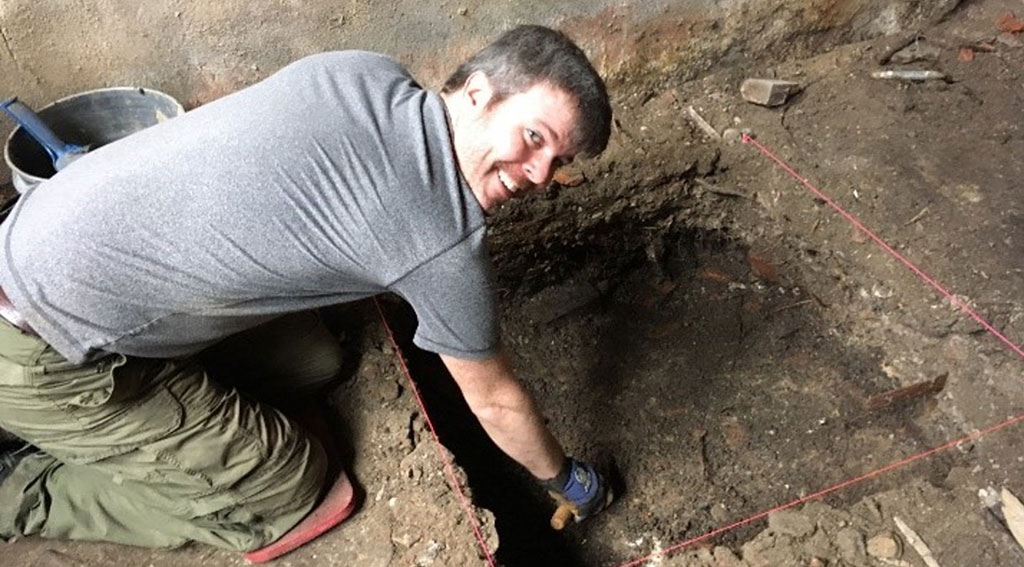We are pleased to welcome Dr. Ryan Kennedy as an Assistant Professor and the new Director of the William R. Adams Zooarchaeology Laboratory (WRAZL). Ryan is a zooarchaeologist who uses archaeological animal remains to examine animal commodification and its impacts to animal populations in the past. He received his Ph.D. from our Department in 2016, and he previously earned a B.A. in Archaeology from the University of Virginia and an M.A. in Historical Archaeology from the University of Massachusetts-Boston. Prior to returning to Bloomington, Ryan was a Research Associate at the University of New Orleans where he developed a research program, focusing on the development of Gulf of Mexico fisheries. Ryan is thrilled to return to IU and is excited to take on his new roles in the Department of Anthropology.
Ryan’s current research examines the commodification and trade of animals in the recent past, and much of his work focuses on either 19th-century Chinese immigrant communities in the American West or the development of fisheries and other extractive industries in the northern Gulf of Mexico (especially New Orleans and Florida). Ryan uses animal remains from Chinese Diaspora sites in California and Wyoming to trace the production and trade of a diverse array of animal food products – including dried fish, shark fins, cuttlefish, and bear paws – across the Pacific World, and he is especially interested in the role that these foods played in creating diasporic culinary practices, generating income for Chinese entrepreneurs and their families, and maintaining transnational connections between communities. In the Gulf of Mexico, Ryan’s work largely examines the creation and impact of large-scale fishing industries that supplied cities in the Gulf of Mexico and beyond with food. Much of this research has focused on sheepshead, a fish common in estuarine waters, and Ryan is currently extending this work to other aquatic species including northern red snappers and green sea turtles. Finally, Ryan has also begun a project focused on turtle use over the past 400 years in the Chesapeake Bay area, and he plans to do a deep dive into the ecological impact of the region’s intensive 19th-century export industry focused on diamondback terrapins.

 The College of Arts
The College of Arts